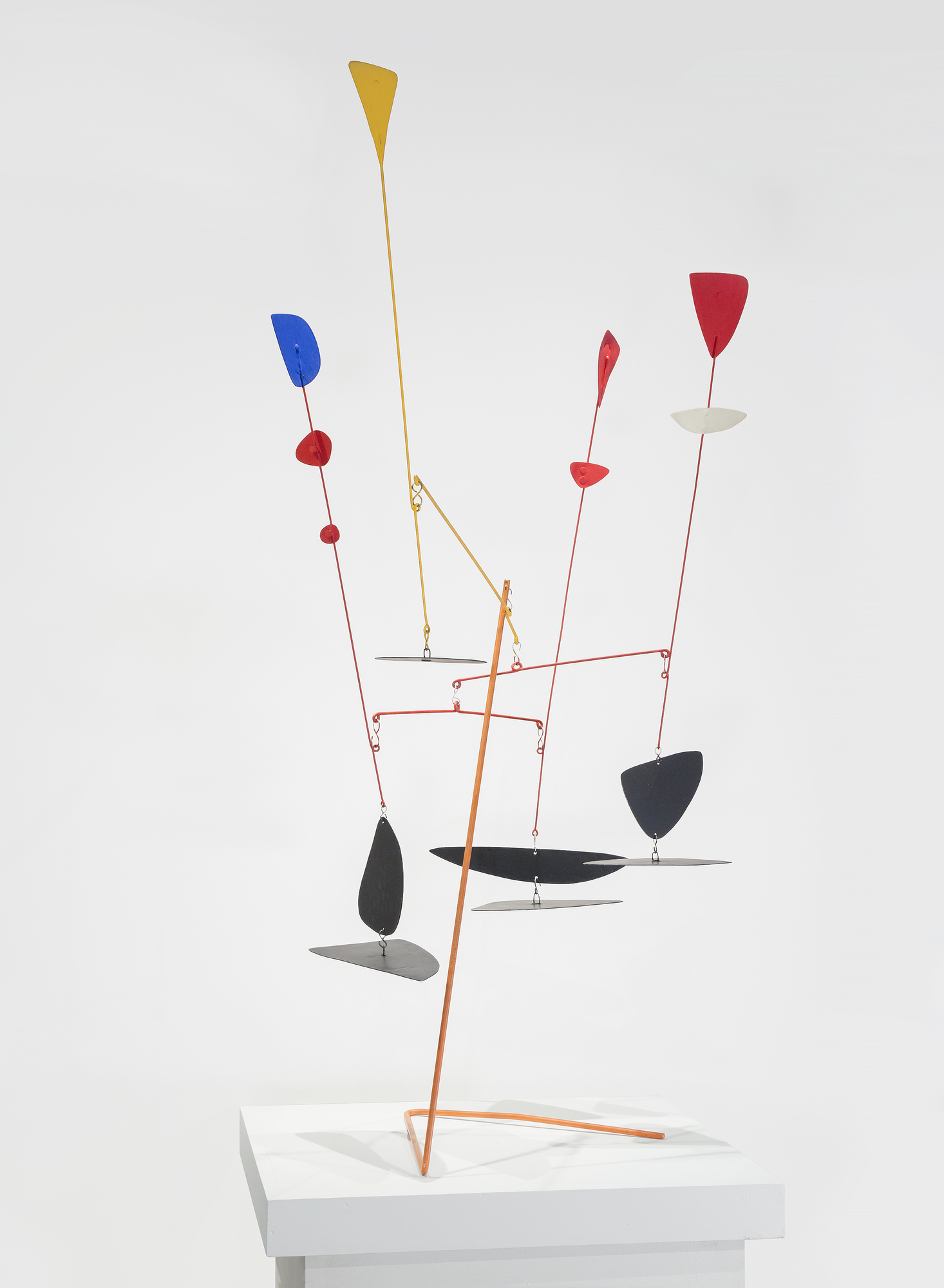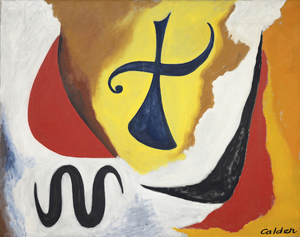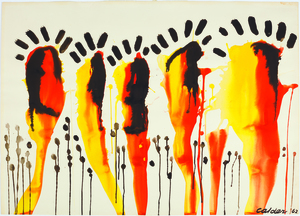אלכסנדר קלדר(1898-1976)










מקור ומקור
עיזבון האמןמ. קנודלר ושות', ניו יורק
חוות דעת על Galerie Internazionale , מילאנו
Arnold Herstand & Co. , ניו יורק
Meshulam Riklis , ניו יורק
כריסטיס ניו יורק, מאי 1997, פריט 127
אוסף פרטי, שנרכש מהמכירה הנ"ל
כריסטיס ניו יורק, יוני, 2001, פריט 1103
אוסף פרטי
גלריה מישל רוזנפלד, ניו יורק
אוסף פרטי
תערוכה
ניו יורק, גלריה בוכהולץ, אלכסנדר קלדר, נובמבר-דצמבר 1945דטרויט, מכון דטרויט לאמנויות יפות, מקורות הפיסול המודרני... עוד...ינואר - מרץ, 1946
ניו יורק, M. Knoedler & Co., Alexander Calder / Fernand Leger, October 1979, p. 9, no. 5 (מאויר)
ניו יורק, מ. קנודלר ושות', אלכסנדר קלדר מוביילים עומדים, דצמבר 1980-ינואר 1981
ברצלונה, ספרד, פונדאסיו ז'ואן מירו, קלדר, נובמבר 1997-פברואר 1998, מס' 73
בוורלי הילס, קליפורניה, גלריה גגוסיאן, אלכסנדר קלדר, מאי-יוני, 2003
לוס אנג'לס, קליפורניה, L&M Arts, אלכסנדר קלדר, אפריל - יוני, 2012
גלריה מישל רוזנפלד, ניו יורק, תערוכת אביב קבוצתית, מרץ - מאי 2013
... פחות...
היסטוריה
אלכסנדר קלדר היה דמות מפתח בהתפתחות הפיסול המופשט ונודע בעבודתו פורצת הדרך באמנות הקינטית; הוא אחד האמנים המשפיעים ביותר במאה ה-20. פרלוד לאוכל האדם הוא פסל עומד מאוזן בעדינות המגיב לזרמי אוויר ויוצר חוויה ויזואלית דינמית המשתנה ללא הרף.
המוביילים העומדים של קלדר היו תוצאה של ניסויים מתמשכים שלו בחומרים, צורה ואיזון. אלפרד בר, מנהלו הראשון של המוזיאון לאמנות מודרנית בניו יורק, הזמין את קלדר ליצור מובייל עומד חדש בשנת 1945. העבודה הנוכחית היא מחקר רשמי עבור אותה עבודה מוזמנת, אוכל-אדם עם דגלון. פרלוד לאוכל האדם, כמו הפסל ב-MoMA, נועד להתבונן בו מזוויות רבות, ולעודד את הצופים להסתובב ולתקשר איתו. בשני החלקים, רכיבי המתכת השונים נעים סביב עמוד מרכזי. מקטות ומחקרים מילאו תפקיד חיוני בפרקטיקה של קלדר מכיוון שהם נתנו לו את ההזדמנות להבין קנה מידה ואיזון לפני הרחבת היצירה. לעתים קרובות, מקטות אלה היו קיימות בגודלן הקטן במשך עשרות שנים לפני שהוגדלו או פשוט התקיימו בגודלן ומעולם לא הפכו ליצירות גדולות יותר. בפרלוד אנו יכולים לראות את קלדר חושב בצורה אנכית יותר בהשוואה ליצירה האחרונה ב-MoMA.
פרלוד לאוכל-האדם מיוצג גם בציור ההכנה של קלדר, סקיצות למוביילים: פרלוד לאוכל-אדם; כוכב ים; תמנון, שנמצא באוסף הקבוע של מוזיאון פוג בהרווארד.
תובנות שוק
- אלכסנדר קלדר הוא ציין את המוביילים שלו stabiles, אשר לעתים רחוקות לבוא למכירה.
- השוק של קלדר חווה קצב צמיחה שנתי מורכב של 8% מאז 1976.
- העניין המוסדי ביצירתו של קלדר עולה, ומוזיאונים חדשים באסיה ובמזרח התיכון מבקשים להחזיק בדוגמאות משנות ה-30 וה-40.
תוצאות מובילות במובייל ובמכשירים ניידים עומדים במכירה פומבית
מוביילים דומים וניידים עומדים נמכרו במכירה פומבית
מוביילים וניידים עומדים באוספי המוזיאון
גלריית תמונות
משאבים נוספים
לברר
אתה יכול גם לאהוב
יצירות אחרות מאת אלכסנדר קלדר






























































